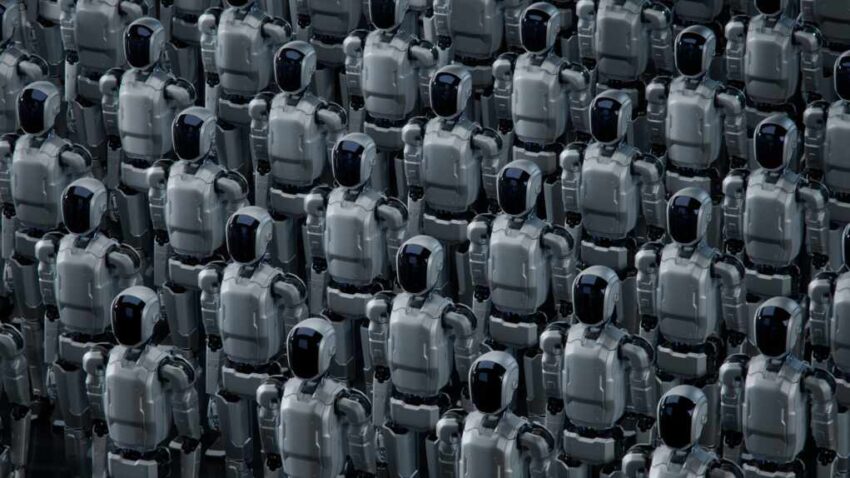China’s robot Olympics drew global attention, but its headline-grabbing machine failures reveal deeper questions about the risks of foreign tech ambitions and overhyped innovation—especially when state power and global competition are in play.
Story Snapshot
- China hosted the inaugural World Humanoid Robot Games, drawing major international participation and government backing.
- Mechanical failures, including a robot face-plant, exposed the limits of current robotics and provided viral spectacle.
- The event underscores China’s push for technological dominance amid demographic and labor challenges.
- Public stumbles highlight both the progress and the real risks of rapid, state-driven tech development.
China’s World Humanoid Robot Games: Spectacle and Setbacks
The World Humanoid Robot Games, held in Beijing in August 2025, brought together over 500 robots from 280 teams representing 16 countries. Backed by China’s government and framed as a showcase of technological prowess, the event featured competitions in soccer, sprinting, boxing, and dancing. While some robots displayed remarkable skills, many suffered mechanical failures, with the most memorable incident being a robot’s spectacular face-plant during the opening ceremony. This high-profile flop, broadcast globally, instantly became the event’s defining moment and a social media sensation.
China’s leadership positioned the games as a milestone in “embodied intelligence,” seeking to normalize robots in public life, from retail to industrial settings. The government’s heavy investment stems in part from demographic pressures—an aging population and shrinking workforce—which have pushed national leaders to accelerate robotics research and close the technology gap with Western powers, particularly the United States. Unlike previous robotics contests that included a range of machines, this event focused exclusively on humanoid forms, highlighting both the aspirations and limitations of current technology. The games blended competition with real-world testing, transforming technical mishaps into public learning opportunities and entertainment for a global audience.
International Competition and the Stakes for American Leadership
The event’s scale and ambition reflect China’s desire for global tech leadership. International teams from the US, Germany, Japan, and Brazil joined the competition, with universities and private firms eager to showcase their latest advances. However, the spectacle also underscored the intense rivalry between China and the US in robotics and artificial intelligence. American teams aimed to demonstrate their own capabilities and maintain a leadership position, aware that state-subsidized Chinese competitors benefit from powerful government backing and access to massive research funding. While collaboration was encouraged on the surface, the competition’s undertone was clear: China seeks to surpass the West, not merely catch up.
For US conservatives wary of globalist ambitions and foreign influence, the event is a reminder of the stakes when state-backed regimes pour resources into sensitive sectors. China’s top-down approach often disregards ethical, privacy, and security considerations, raising alarms about how these technologies could be leveraged in ways that undermine American interests and values. The games also highlight the dangers of prioritizing spectacle over substance, as public failures can mask deeper systemic flaws or distract from issues like intellectual property theft and government overreach in tech development.
Failures, Lessons, and the Reality Check for Robotics
Despite the hype, technical failures were widespread. Videos of robots stumbling, collapsing, or malfunctioning spread rapidly online, turning what was intended as a display of progress into a showcase of limitations. Organizers and participants were quick to frame these mishaps as valuable learning experiences. Researchers emphasized that public testing exposes weaknesses not seen in controlled environments, allowing for rapid iteration and improvement. Morgan Stanley analysts, for example, predict China could have hundreds of millions of humanoid robots by 2050, underscoring the scale of the nation’s ambition and investment.
Humanoid machine face-plants at China’s inaugural ‘robot Olympics’ https://t.co/93WypJp1l8 pic.twitter.com/prgeAplefC
— New York Post (@nypost) August 15, 2025
Yet, the event’s failures serve as a cautionary tale about overpromising and underdelivering in complex technologies. For American readers, this resonates as a warning against government-driven grandstanding—where technical spectacle can be prioritized over real-world readiness, and where the interests of ordinary citizens and core values like individual liberty, privacy, and constitutional freedoms risk being sidelined. The games’ viral moments may be entertaining, but they also provide a stark reminder: the real test of technology is not in choreographed demonstrations, but in practical, reliable deployment that respects fundamental rights.
Broader Implications: Industry, Society, and the Global Tech Race
The World Humanoid Robot Games set a precedent for future international competitions, encouraging cross-border collaboration and standard-setting in robotics. Valuable data from the event is already being analyzed to improve robot design, coordination, and safety. While China’s drive has accelerated global interest and investment, the event also highlights the importance of maintaining American leadership, protecting intellectual property, and ensuring that technological progress aligns with national values and security interests.
Ultimately, the games demonstrate that while rapid advancement is possible, meaningful innovation requires transparency, accountability, and respect for individual rights—principles often at risk in state-driven projects. For American families, entrepreneurs, and advocates of limited government, the lesson is clear: vigilance is needed to ensure that technology serves society’s best interests, not just the ambitions of foreign powers or overreaching bureaucracies.
Sources:
World Humanoid Robot Games – Wikipedia
World’s first humanoid robot games begin in China | DW
Robots awkwardly race, fight and flop around in China’s first World Humanoid Robot Games | Live Science
Click this link for the original source of this article.
Author: Editor
This content is courtesy of, and owned and copyrighted by, https://conservativeamericatoday.com and its author. This content is made available by use of the public RSS feed offered by the host site and is used for educational purposes only. If you are the author or represent the host site and would like this content removed now and in the future, please contact USSANews.com using the email address in the Contact page found in the website menu.








